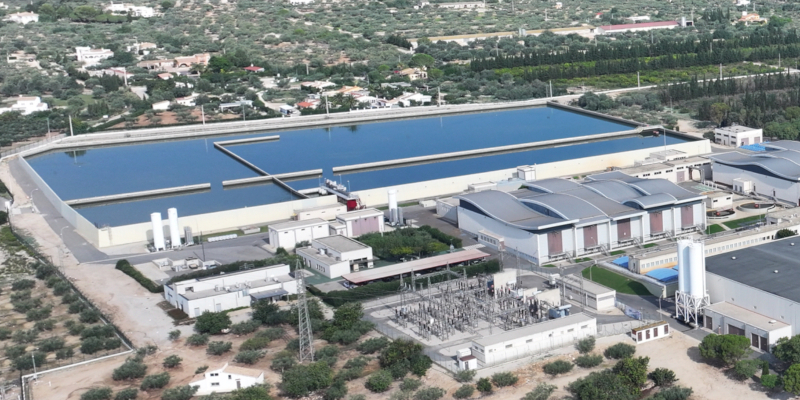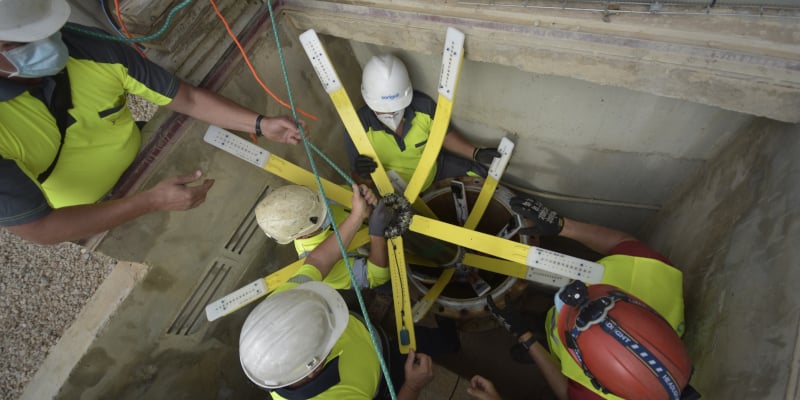Ripple Effect: Building a smart water system on Catalonia’s coast
On Catalonia’s sun-drenched coast, the utility Consorci d’Aigües de Tarragona (CAT) faces prolonged droughts and unpredictable water quality. As the region’s primary bulk-water provider, CAT serves 800,000 people and 25 major industrial clients. To serve its community, regardless of weather and water conditions, CAT uses advanced digital tools such as digital twins, AI, and extensive sensor networks.
CAT’s step-by-step approach to digital transformation shows how starting small and strategically scaling can boost resilience. These innovations ensure reliability and set new efficiency standards.
Ferrán Bosch, Senior Business Development Manager Xylem Vue at Xylem, speaks to Andreu Fargas Marques, Innovation, Technology, and Energy Manager at CAT, about how the utility is using digital technology to optimize their systems and ensure a reliable water supply for its community.
Ferrán Bosch: Intensifying water challenges are reshaping how utilities operate. How is CAT using digital tools to stay ahead of external stresses?
Andreu Fargas Marques: Our digital transformation is all about driving efficiency, and that efficiency is key to managing water stress – whether it’s volatile weather patterns, aging infrastructure or supply issues.
We have been on this digital journey for more than 20 years, starting with the automation of treatment operations.

As our needs evolved, we expanded our efforts across our network with a digital twin to optimize water distribution and, more recently, introduced a structural digital twin to detect leaks and prevent pipeline failures.
By proactively addressing leaks and outages, we’ve averted major breaks that could have caused significant service disruptions for the communities and businesses we serve.
Now, we’re taking digital twin technology even further, building virtual models of our pipelines, treatment plants, and distribution networks. These models will enable us to simulate different scenarios, helping us anticipate risks and ensure operational continuity – even in changing conditions. We’re also integrating artificial intelligence and smart sensors to optimize water management across our operations.
Can you share an example of how digital technology has proved essential to your operations?
One area where digital tools have been transformative has been in support of our pipeline replacement and rehabilitation plan. In 2020, we experienced a significant pipeline failure that inspired us to take action. We partnered with Xylem to launch an ambitious condition assessment program, evaluating more than 13,000 pipes across our network.

Using advanced sensing technologies – such as electromagnetic and acoustic monitoring inspections – we identified over 30 damaged pipes in need of repair, along with five more that were at risk of failure.
This level of insight helped us make targeted, cost-effective investments, preventing service disruptions while saving millions in CapEx.
How do you plan on managing different data streams as you scale digital deployments?
Core to our digital transformation is Xylem Vue, which integrates and unifies data from multiple sources across our network into one intuitive platform. It captures data from our AI-powered digital twins, real-time water monitoring tools and intelligent pumps, all in one place.
Ultimately, this platform will prove critical to our digitization plans. Not only will it improve how we monitor and manage our assets and infrastructure, but it will also optimize every step of our operations – from sourcing water at the Ebro River right through to treatment and distribution across Tarragona’s municipalities.
Operator confidence is crucial. How have you encouraged your teams to embrace these technologies?
Building trust takes time. We started with small projects that delivered immediate benefits, like monitoring critical pipelines. Once teams saw the value of the data, they were open to scaling up. Accurate, accessible data is key – when operators trust the information, they trust the system.

We’ve also invested in extensive training and clear communication. By demonstrating the practical benefits of new systems and involving operators in the implementation process, we’ve cultivated a sense of ownership and confidence in the tools they use daily.
Workshops, hands-on training sessions, and transparent metrics have all contributed to building strong support among our teams.
How does CAT’s digital strategy align with the utility’s other efficiency goals?
Lower energy use, smarter operations, and community buy-in reinforce each other, creating a positive cycle. By applying these principles to every aspect of our operations, we can meet today’s needs without compromising future generations.
We’ve installed solar panels to power key facilities and have optimized treatment processes to reduce energy consumption and chemical use. By aligning these efforts with public outreach programs, we’re also educating communities about the importance of sustainable water use.
What advice would you give to utilities beginning their digital journey?
Don’t try to tackle everything at once. Start with achievable goals, collect reliable data, and build on small successes. Digital transformation is a gradual process, and incremental wins help gain stakeholder buy-in and pave the way for larger projects. Collaboration across teams is also key to sustaining momentum.
We started relatively small, but now CAT is the benchmark for resilient, digitally optimized water management in Spain. By leveraging data and automation, we’re actively building a smarter, more sustainable water system.
But it’s been a step-by-step process. With the right strategy, partnerships, and commitment to continuous improvement, any utility can follow the same path.
Innovation isn’t about doing everything at once – it’s about moving forward with purpose and learning at every stage.

